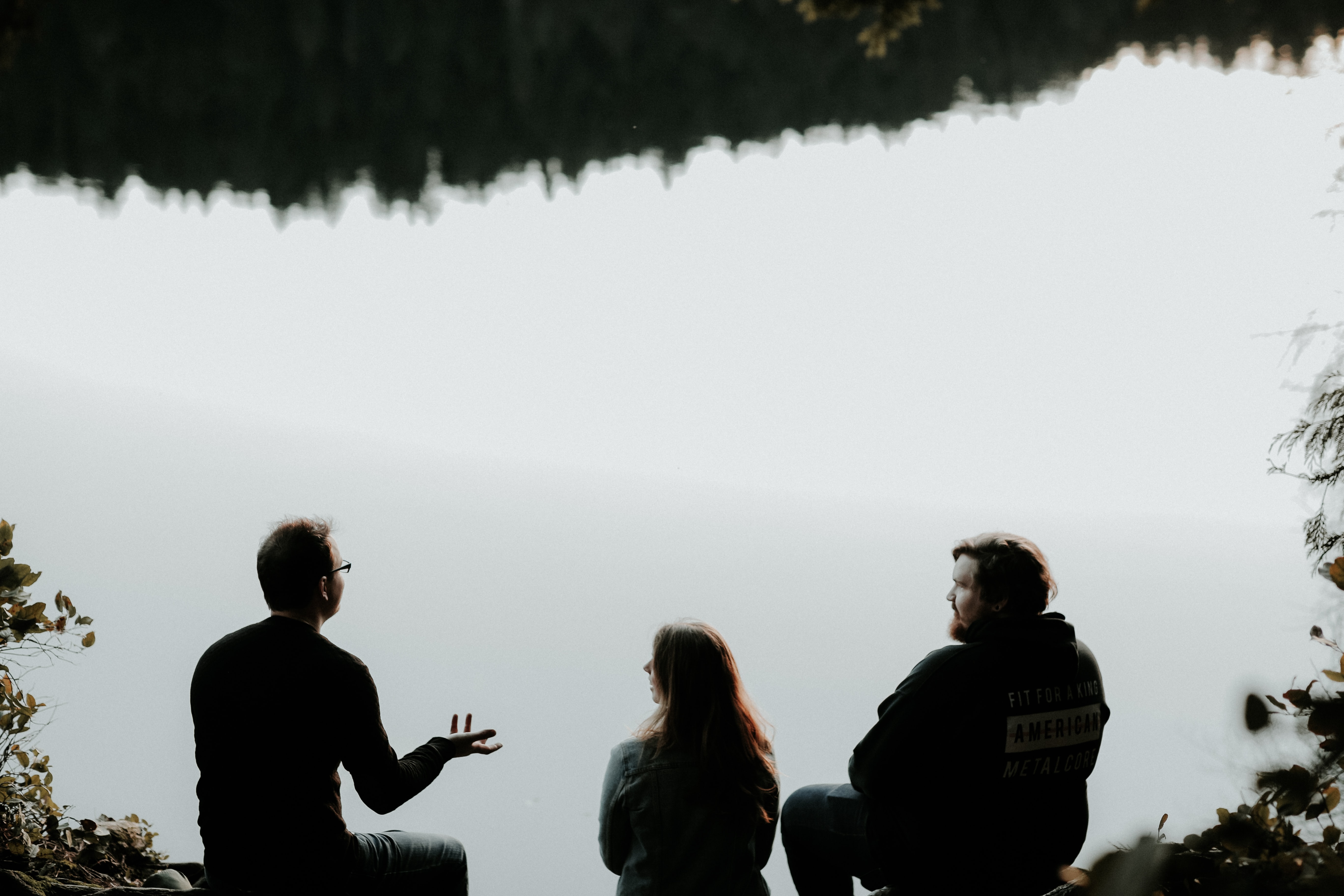Why You Need Mosaic Mentorship
Finding mentors and fostering relationships can be one of the most fulfilling and productive pursuits for undergraduates, graduate students, everyone.

Figuring it out by messing it all up
In my third year at UCSD, I was thrilled to have found a professor who 1) embodied my interest in merging science and writing and 2) had genuine enthusiasm in my professional development. With the right program, he encouraged me that he would be able to support my independent research ventures. The TRELS program at UCSD was the perfect platform for me to both explore the communication of climate change and completely botch my mentorship with a professor.
Although this was not my intention, the experience taught me an important lesson that I wished I understood earlier during my time at UCSD.
How exactly did I achieve this? The Triton Research & Experiential Learning Scholars (TRELS) program was the first platform I had been granted to express and develop my academic interests with a professor. I immediately poured all parts of myself into this project and, in doing so, asked too much of my mentor.
I wanted to explore human language, to understand how the structure of words in a sentence could have an impact on how we perceive and make decisions about climate change. I wished to investigate decades of discussions surrounding global warming and how this history perpetuates misinformation we still see today. I sought to labor through dense climate reports and reference the well researched biology, chemistry, and physics that already existed.
And beyond my research paper, I had an innate desire to understand who exactly I was becoming in my journey of personal and professional development. While I rejected it at the time, my identity was intricately woven between my interests.
It was only after I told this story to another professor of mine did the reality of my “plan” of mentorship come crashing down. No one person would be able to appeal to all the facets of my interests and needs in my academic development. I needed a linguist, a historian, and a climate scientist at least to aid me in my research goals , and instead, I had brought these expectations into my mentorship with a single professor.

I’ll admit I’m being a little hard on my third-year self, as the pursuit for mentorship is self-motivated on a large public campus such as UCSD.
University is many students’ first opportunity to dictate their education. Many students are coming from high school where education is driven by obligation, and most classes, teachers, and times of instruction are assigned with little student input. Upon entering UCSD, I found myself in control of my chosen degree with the exception of a few administrative nudges in the right direction in order to graduate on time. The void of academic constraint was suddenly overflowing with choices I had to make, and after planning out the first few quarters at UCSD, I was satiated with my own involvement in my undergraduate degree. Directing my own mentorship, which would include the close involvement of PhD-holding professors, was completely absent from my mind.
Mosaic mentorship
What I needed in the past was a community of mentors full of niche, yet separate, roles in my progression of research and sense of self as an academic. While relatively new, the concept of community or “mosaic” mentorship, or the incorporation of an array of diverse mentors into a student’s professional growth, has been thought to better aid mentees (Khatchikian, Chahal, and Kielar, 2021).
I was able to experience the benefits of mosaic mentorship firsthand, as I incorporated a community of mentors into my master’s program. A master’s in biology at UCSD includes performing two years of lab research under the guidance of a Principal Investigator (PI) and synthesizing your findings into a written and oral thesis. In addition to your PI, you need at least two more UCSD professionals or thesis committee members in order to complete your master’s. While my PI aided me in my direct research, my committee members gave me a wide perspective of the field and how to effectively communicate science.
Additionally, having two, three, four perspectives on a collection of topics allowed me to critically think about my lab PI’s advice and guidance.
While a professor’s opinion may be trying to steer you in the right direction for their profession, this may not actually be where you are wanting to take your development. Rather than become a parrot of your mentor’s advice, with mosaic mentorship you are able to synthesize collective thought to become the researcher you are aiming to be.
Mosaic mentorship also benefits your mentor too. All professors at UCSD do work outside of the classroom and most likely cannot offer you the complete mentorship you are looking for, even if they are enthusiastic about working with you. Mosaic mentorship respects the time of your mentors by dividing up the amount of mentorship you need to succeed.
Mentorship completely enlivened my experience at UCSD. Learning facts about biology was what I came to UCSD to do, but becoming scientifically literate and fostering my own sense of professional identity was the most important part of the process. And this is not only true for me– it has been shown that students mentored in academia tended to self-identify as a scientist more than those without a mentor (Atkins et al., 2020). It is difficult to feel a part of the academic community without a group of people there to champion and advocate for you.
University is a place to find inspiration for your academic goals, but it is ultimately up to you to invest in your interests. I was never taught how to effectively pursue mentorship, and it took a few mistakes to finalize what I needed. You will most likely continue to make mistakes along your mentorship journey, but I can assure you that it will be worth it.
TLDR
If you want the short version of this article:
Mentorship is as useful, if not more, than the education you receive in class
Prioritize your mentorship plan in university. Locate multiple mentors and ask for different support from each
Consistently reach out to new mentors or check in with your established mentors a few times a quarter
What do you look for in a mentor and how do you find one? That’s a whole article in itself. Here are a few quick places for UCSD folks looking mentorship:
Mentoring for All Initiative
Take some time to look through the UCSD Faculty List to find researchers who interest you
Consider going to the many presentations by academics on campus or online
Reach out to Assistant Professors, Post-Doctorates, Adjunct Professors at the Salk Institute, TAs and more. Mentorship can and should come from all places
Continue the conversation, feel free to reach out to me.
References
Reuse
Citation
@online{kifer2022,
author = {Kifer, Allison},
title = {Why {You} {Need} {Mosaic} {Mentorship}},
date = {2022-10-08},
url = {https://reutherlab.netlify.app/docs/blog/posts/mentormosaic/},
langid = {en}
}